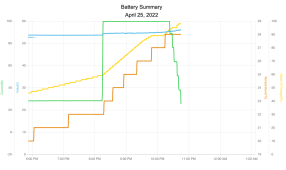I have a couple of thoughts that maybe are really questions.
First, regarding batteries talking to inverters. I understand that there are a few things that communications between batteries and inverters can help with. The battery (or rather, the BMS) can provide more accurate voltage and state of charge information to the inverter. I suppose it can also allow the BMS to control / regulate the charging current coming from the charger part of the inverter. Are there other things? I know others may disagree, but to me this communication is actually of marginal value to most solar installs. Besides, there are very few inverter / chargers that would know how to deal with such communications from the battery / BMS.
Second, RS485 is just a serial communications mechanism, like RS232. It doesn't mean anything unless there is an universally adopted standard for the messages that are communicated on it, and I can't tell that there is any such standard for batteries. I think this is kinda what
@RichardfromSignatureSolar is saying. Instead, it seems like each inverter manufacturer needs to negotiate a "language" with every battery / BMS manufacturer. I use Schneider equipment, and I know right now for any battery to work "closed loop" with them, Schneider has to work directly with the battery manufacturer, who has to implement Schneider's proprietary Xanbus interface, and then Schneider has to "certify" them. Talk about a lack of standard.
As it is, it seems to me that until there is a standard, it is silly to expect every inverter/charger to talk to every battery/BMS. Maybe more importantly, I don't see such communications as being valuable enough to clamor for it.
I'm not trying to argue about any of this, as I really don't know. Do I not understand some great value in these connections? Is there a standard that everyone should be implementing? Am I missing something?



